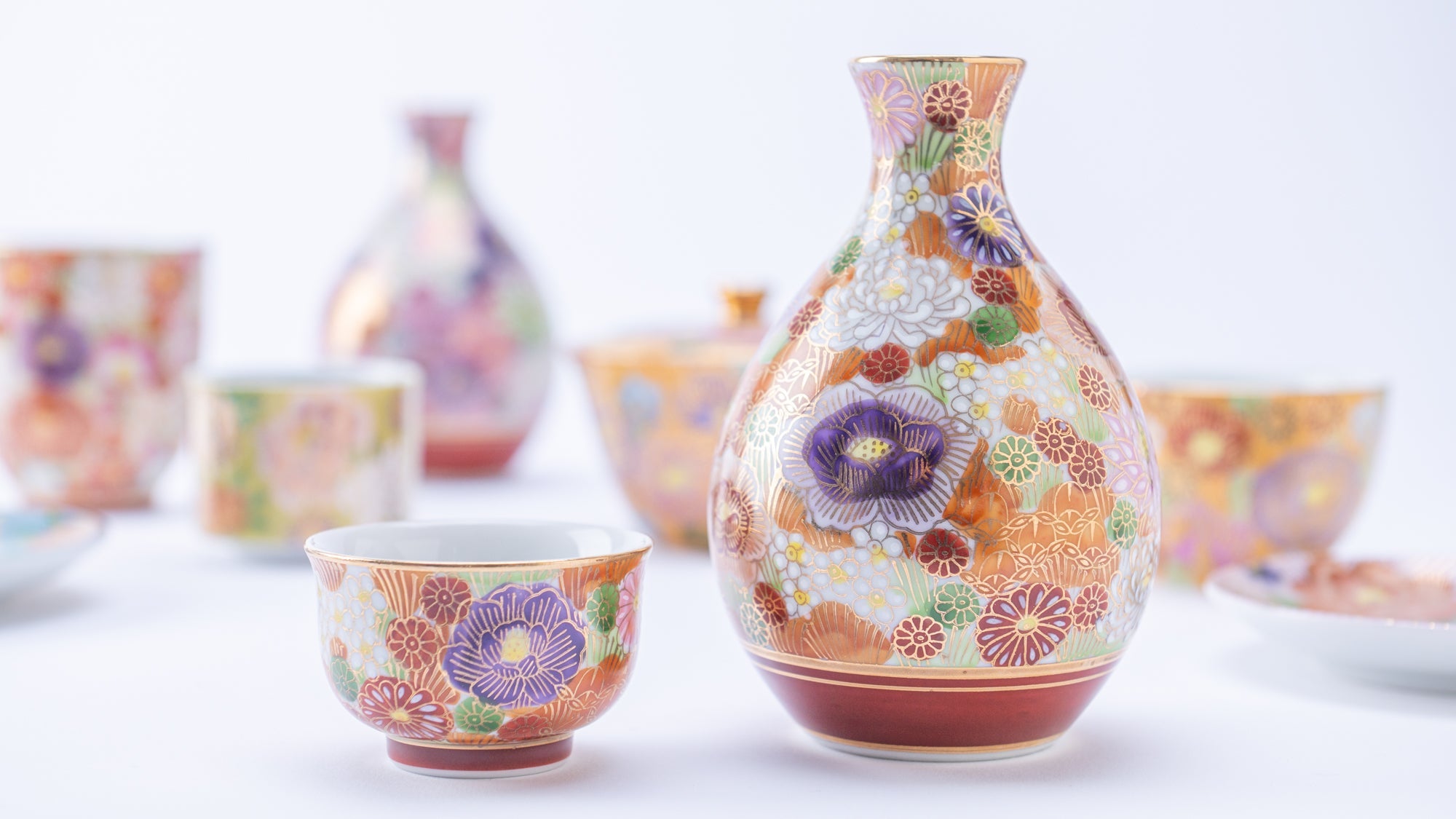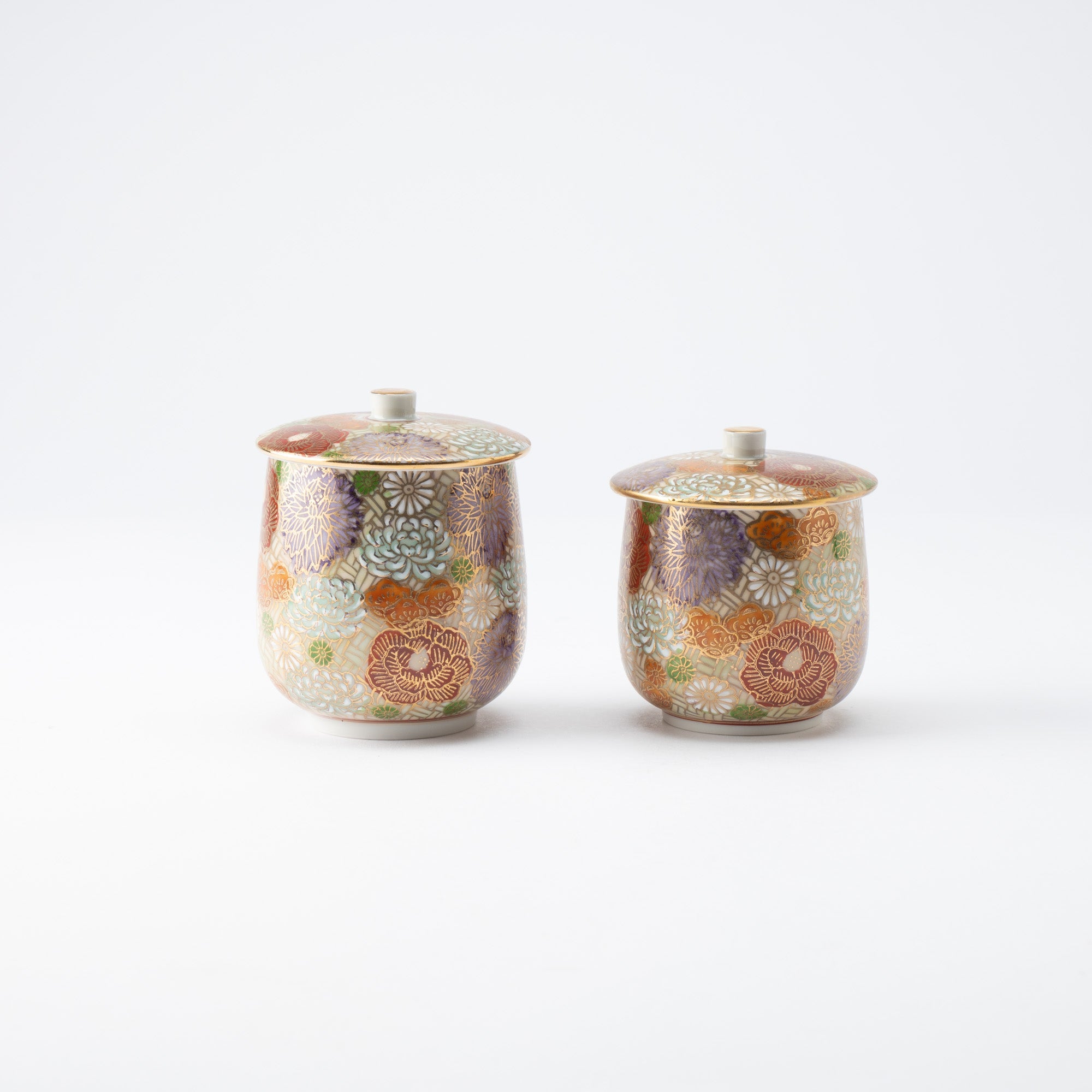
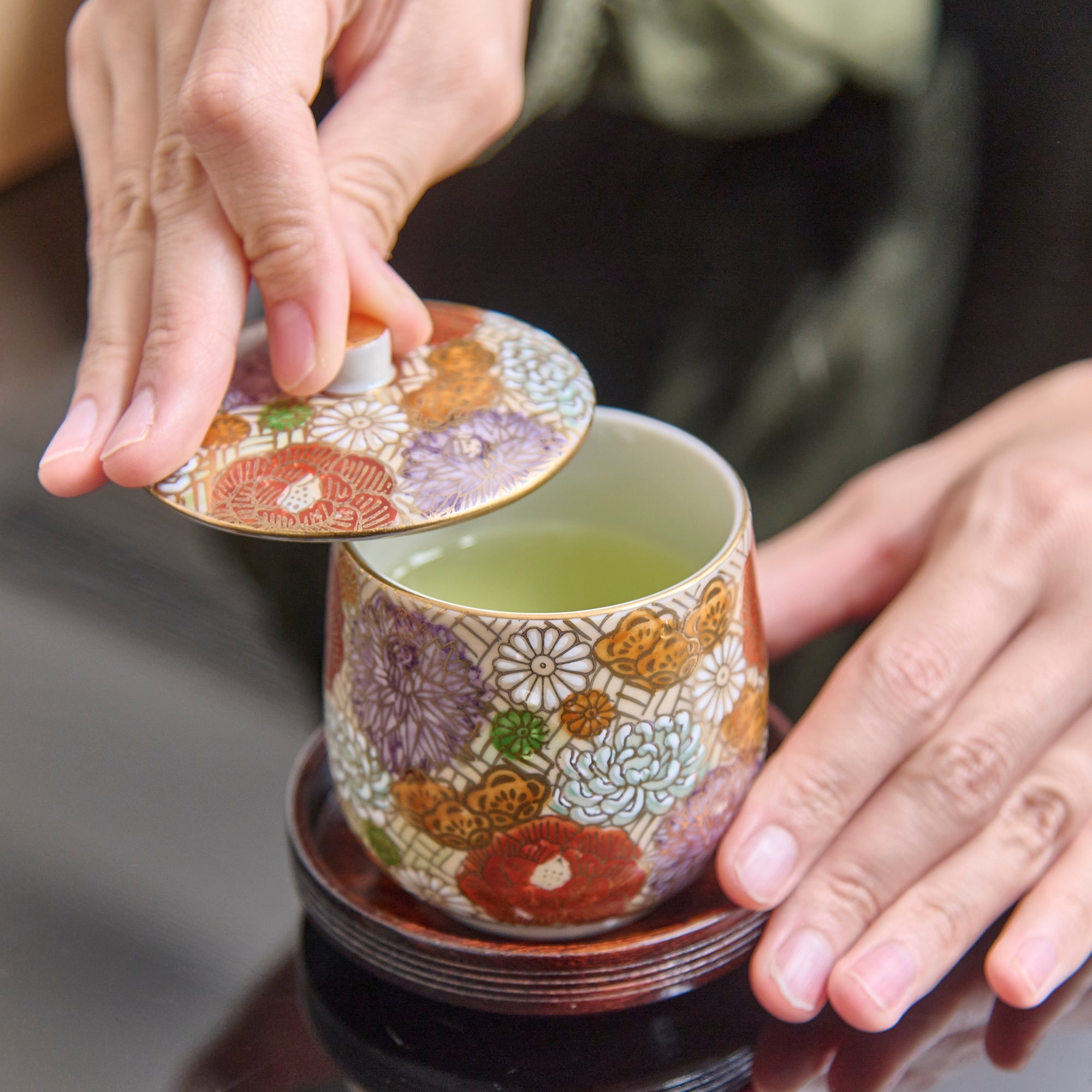
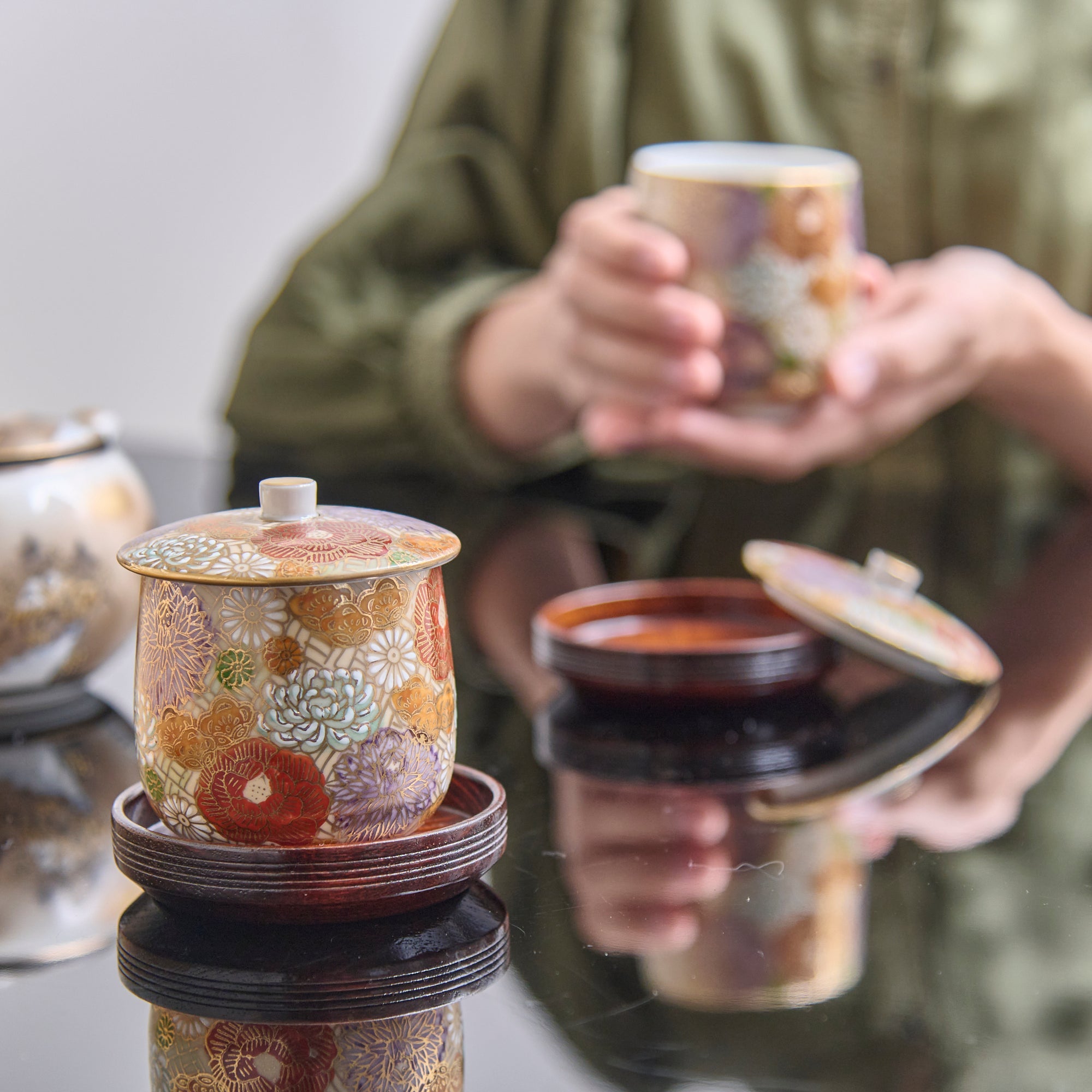
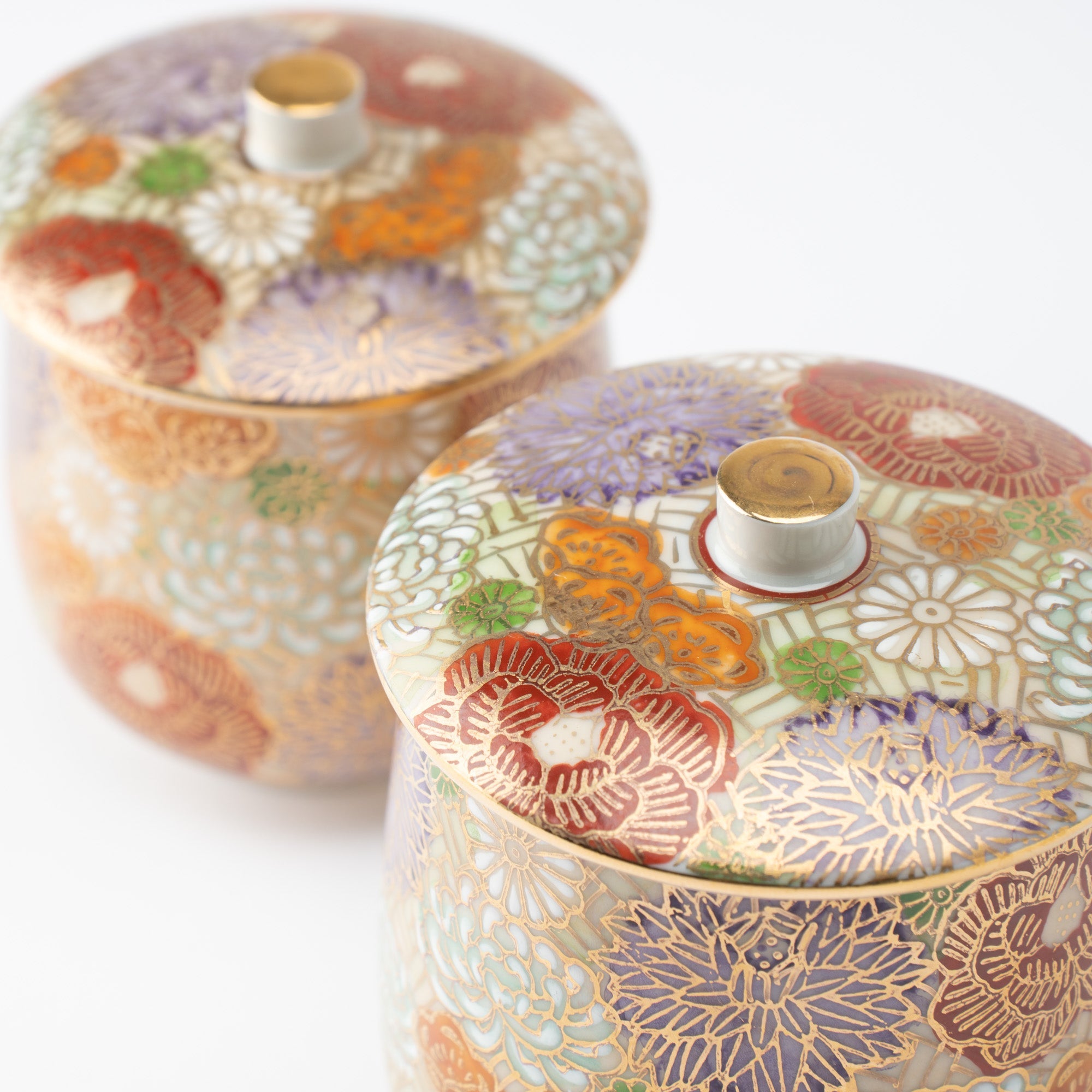
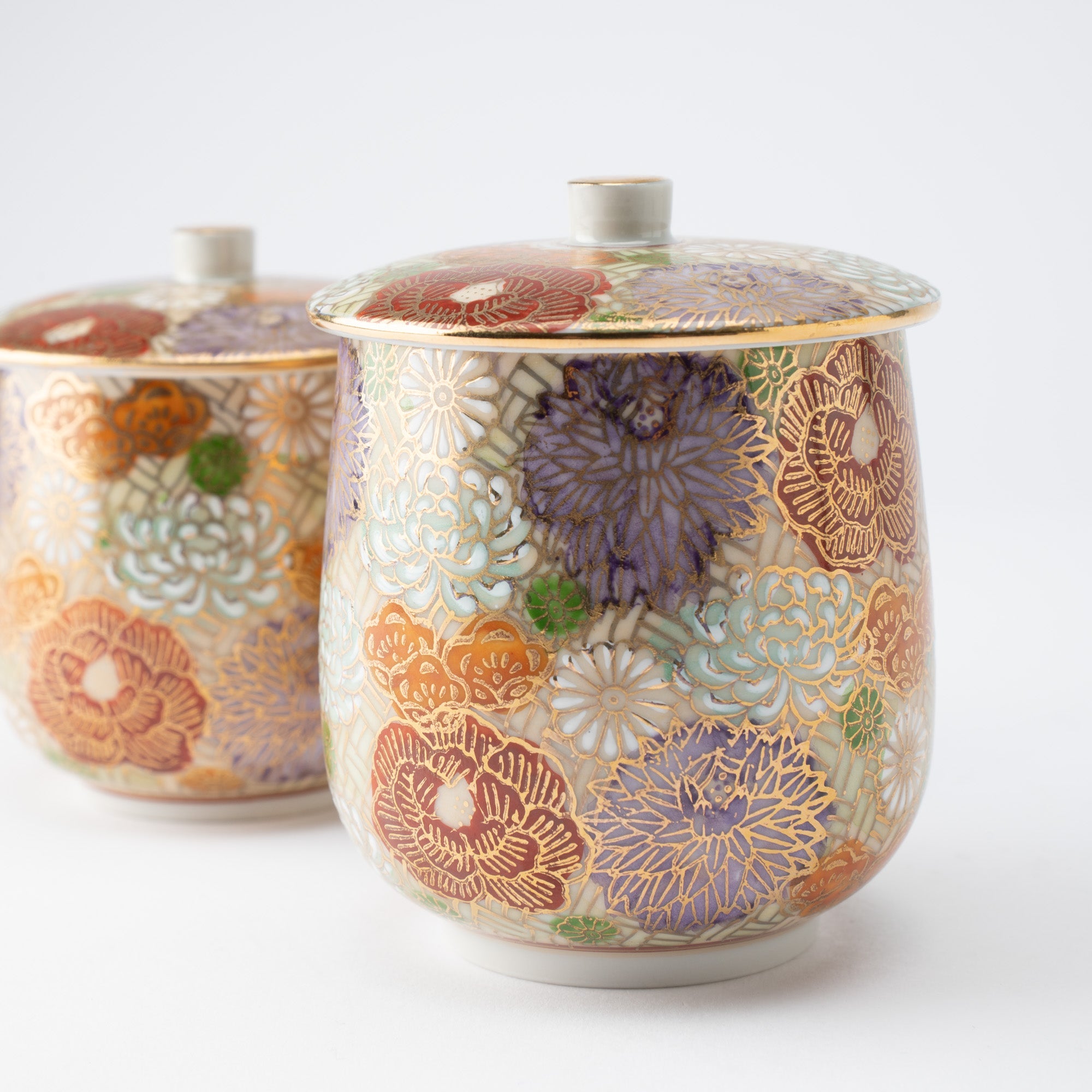
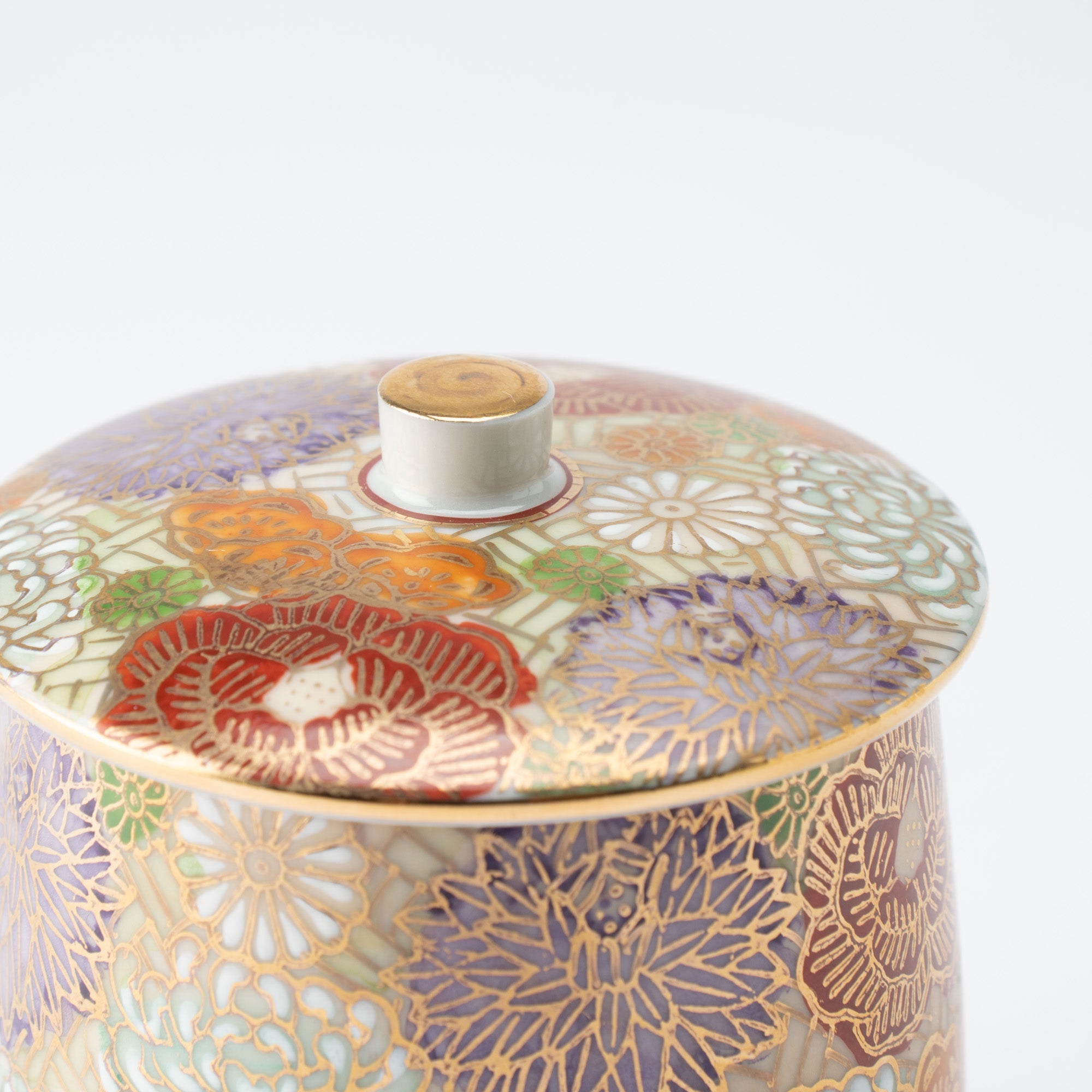
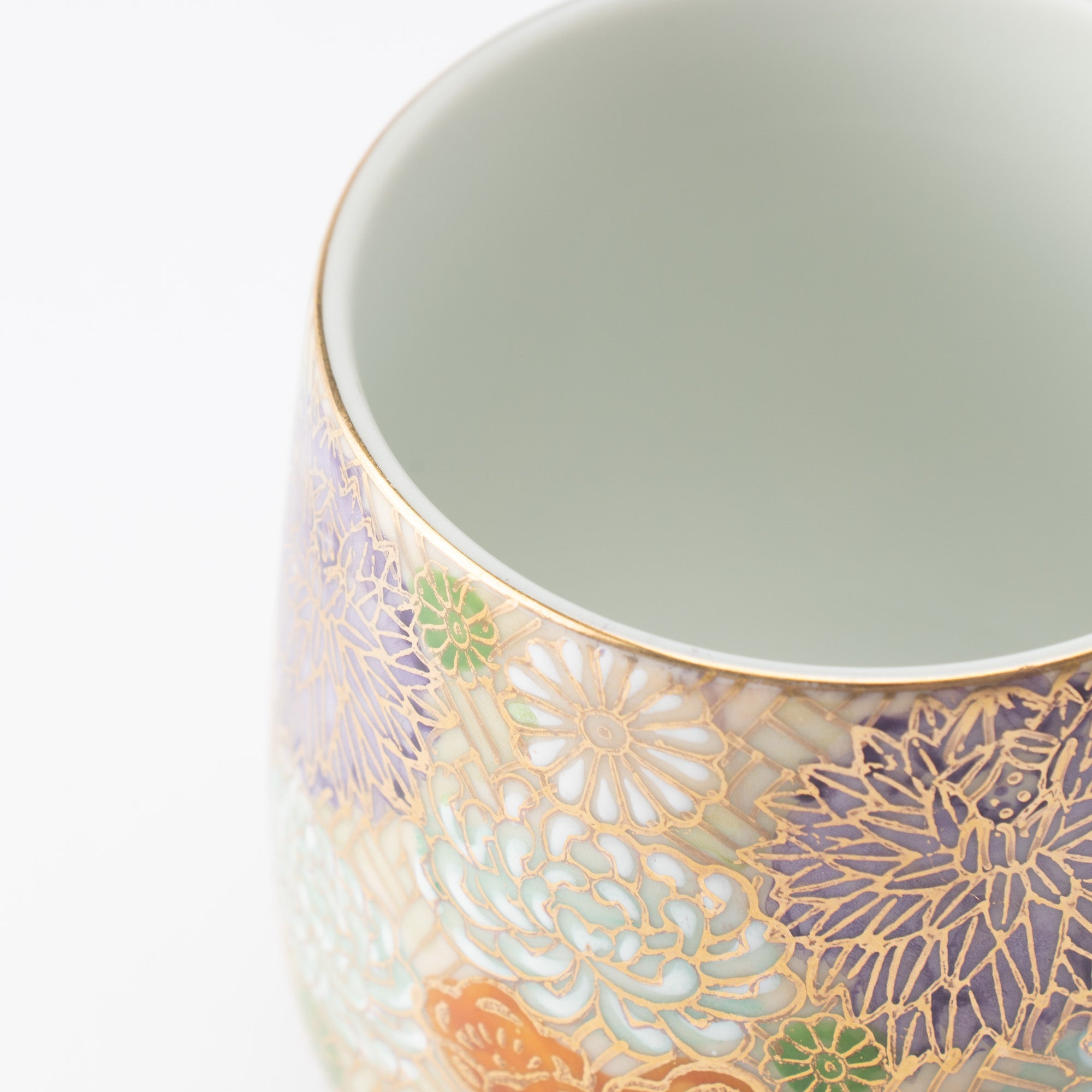
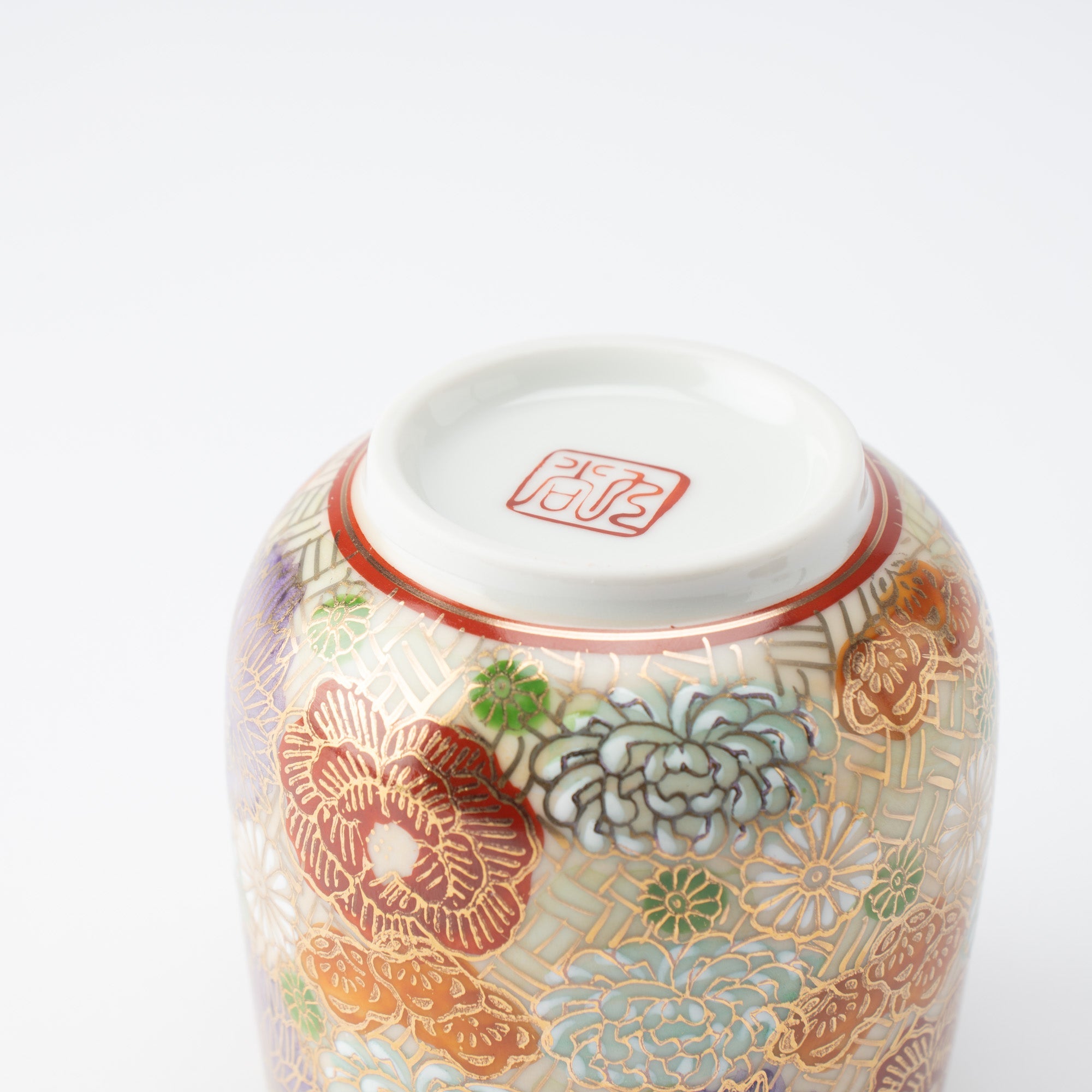
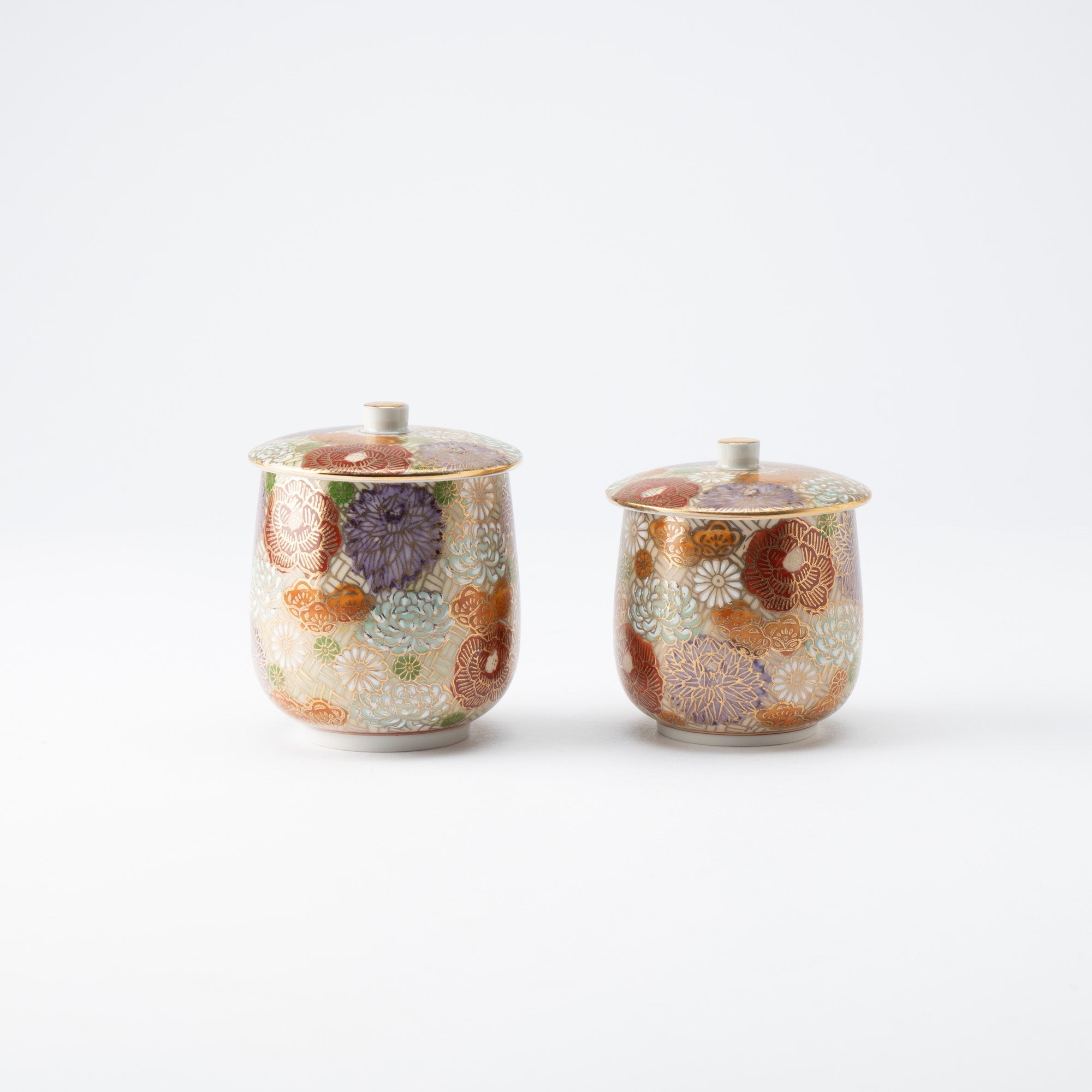
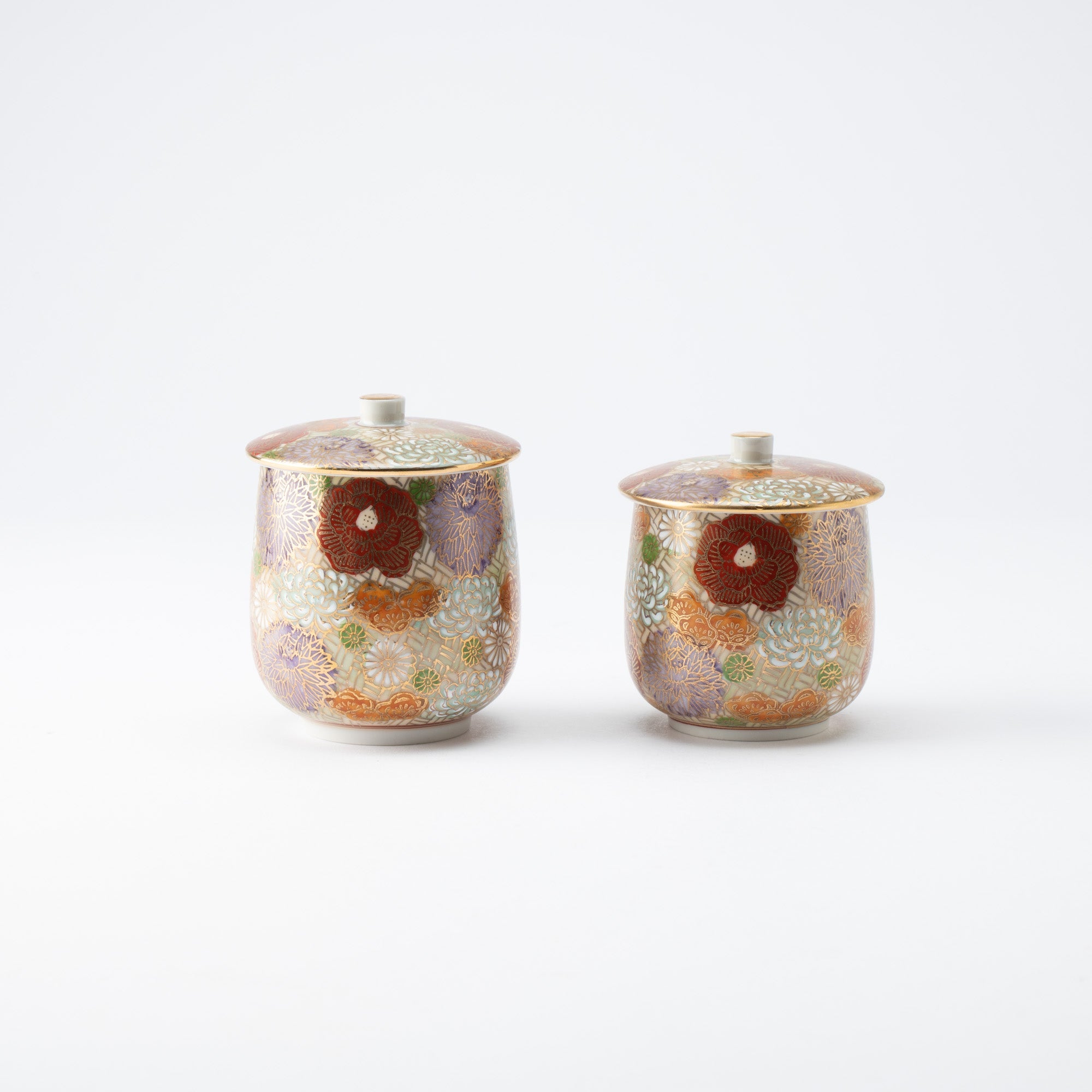
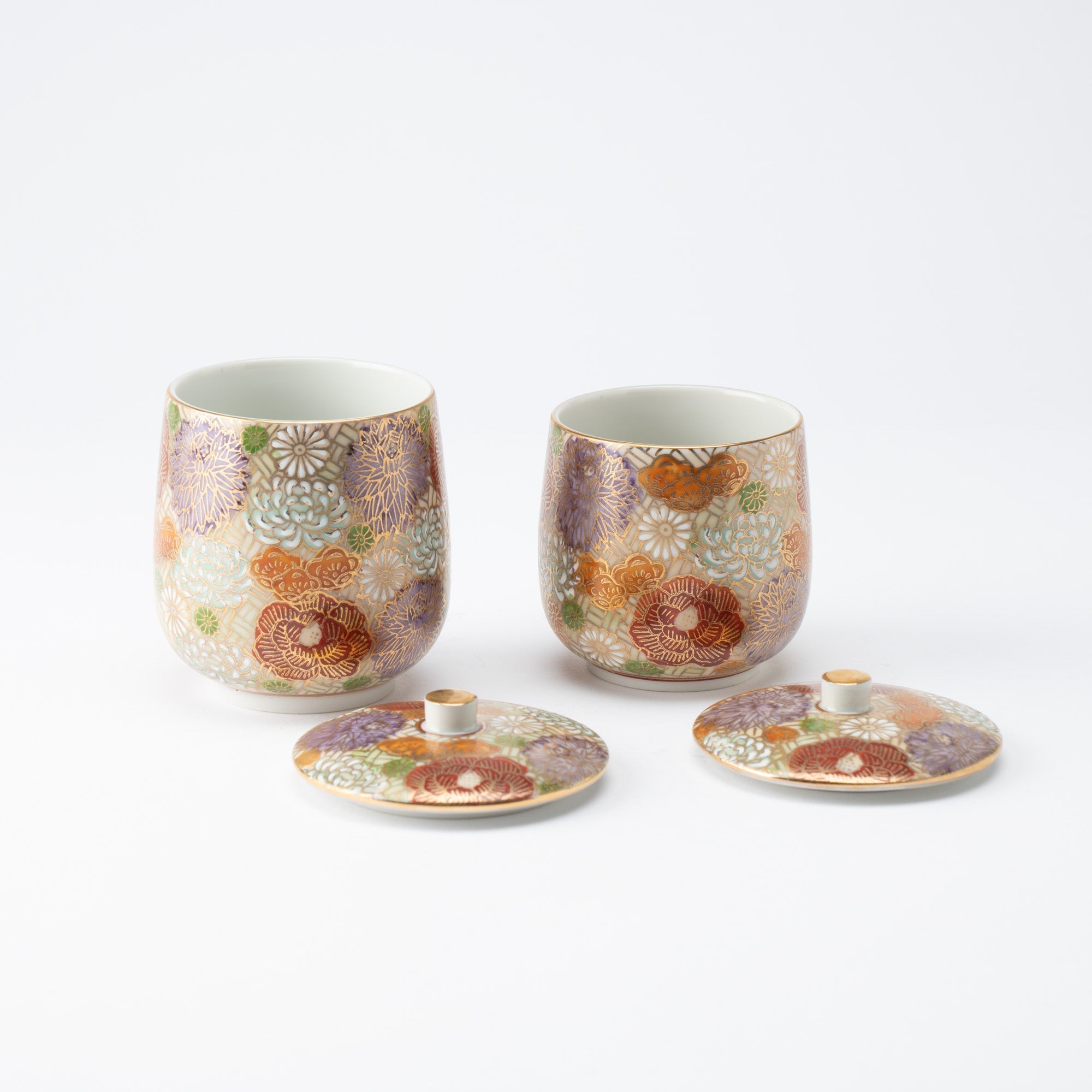
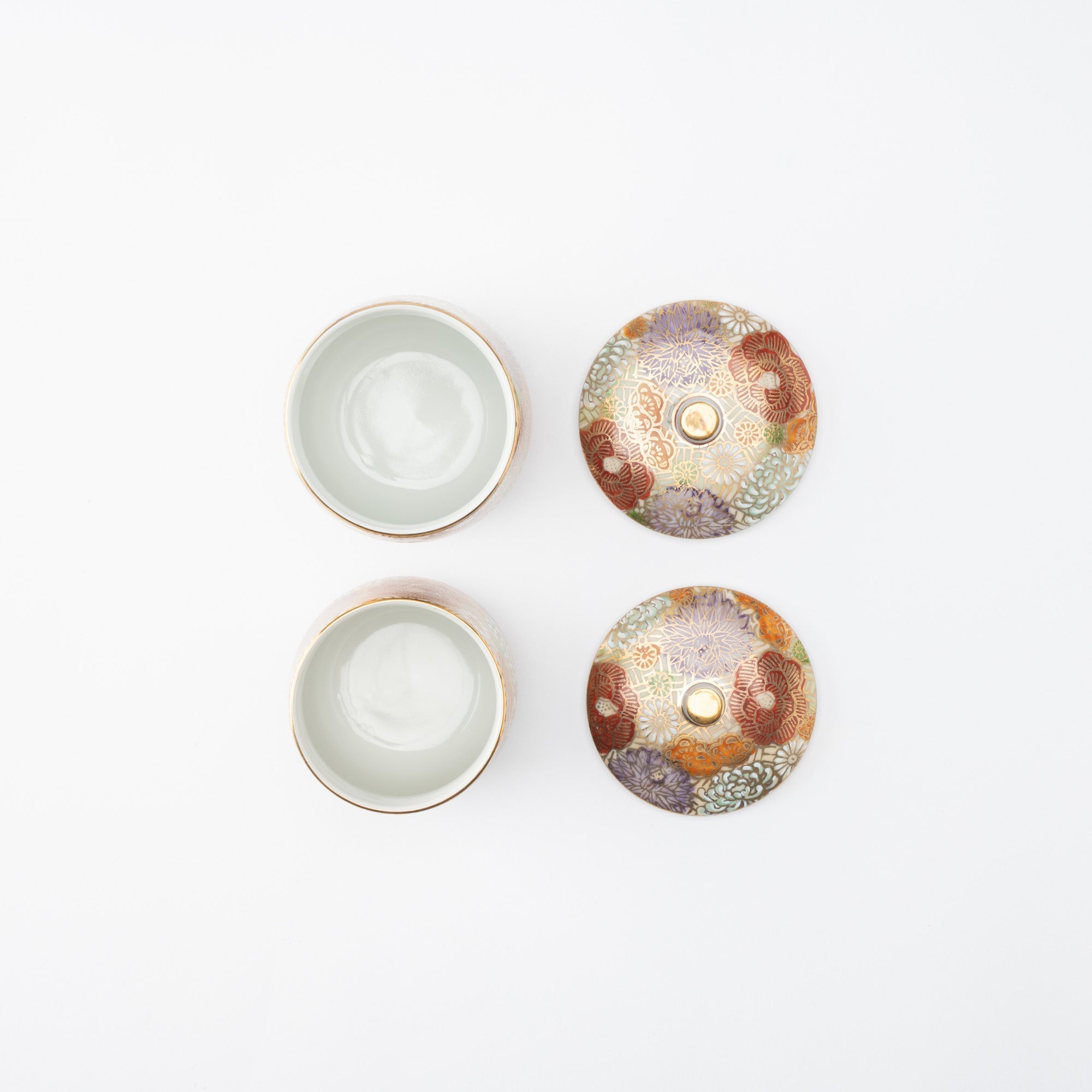
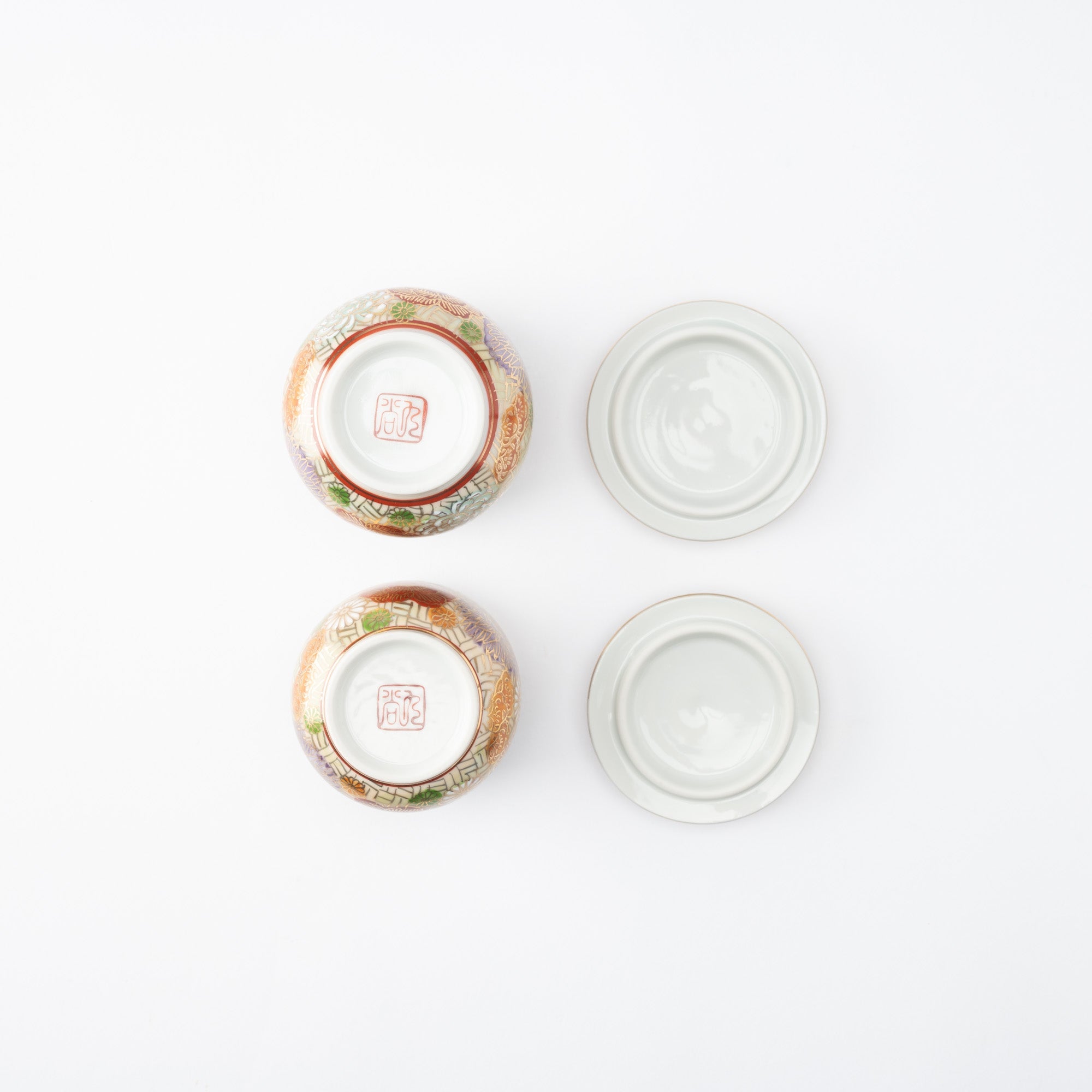
Hanazume Yunomi Japanese Teacup Pair
Estimated Shipping Widget will be displayed here!
This is a pair of lidded yunomi teacups decorated with hanazume, a style characterized by a surface lavishly filled with flowers. Hanazume is one of the most notable designs of Kutani ware, a style that has been handed down since the Taisho period (1912–1926 CE).
Colorful flowers adorn the entire body and the lids of the teacups, complemented by gold trimmings, lending a timeless elegance and sophistication. As each piece is individually crafted, slight variations in the finish may be present, highlighting their unique charm.
These lidded teacups are perfect for entertaining guests as the lids keep the tea from cooling too quickly. For casual occasions, relish relaxed tea moments with friends and family using these cups without their lids. These cups are versatile, suitable not only for Japanese green tea or hojicha roasted tea but also for a variety of beverages like coffee and black tea.
DETAILS
| Quantity | 2 cups |
| Size |
[Larger Cup] D 8 cm (3.1 in) × H 10 cm (3.9 in) [Smaller Cup] D 7.5 cm (3.0 in) × H 9 cm (3.5 in) |
| Capacity |
[Larger Cup] 190 ml (6.4 fl oz) [Smaller Cup] 140 ml (4.7 fl oz) |
| Material | Porcelain |
| Microwave | No |
| Dishwasher | No |
Crafts
Kutani ware is a pottery produced in the Kaga region of Ishikawa Prefecture, with a history spanning over 350 years. It is characterized by the heavy brilliance of the five colors of navy blue, red, purple, green, and yellow that are applied to the bold and daring lines. Its long history has evolved through the tireless efforts and enthusiasm of people who have sought innovation while maintaining tradition.
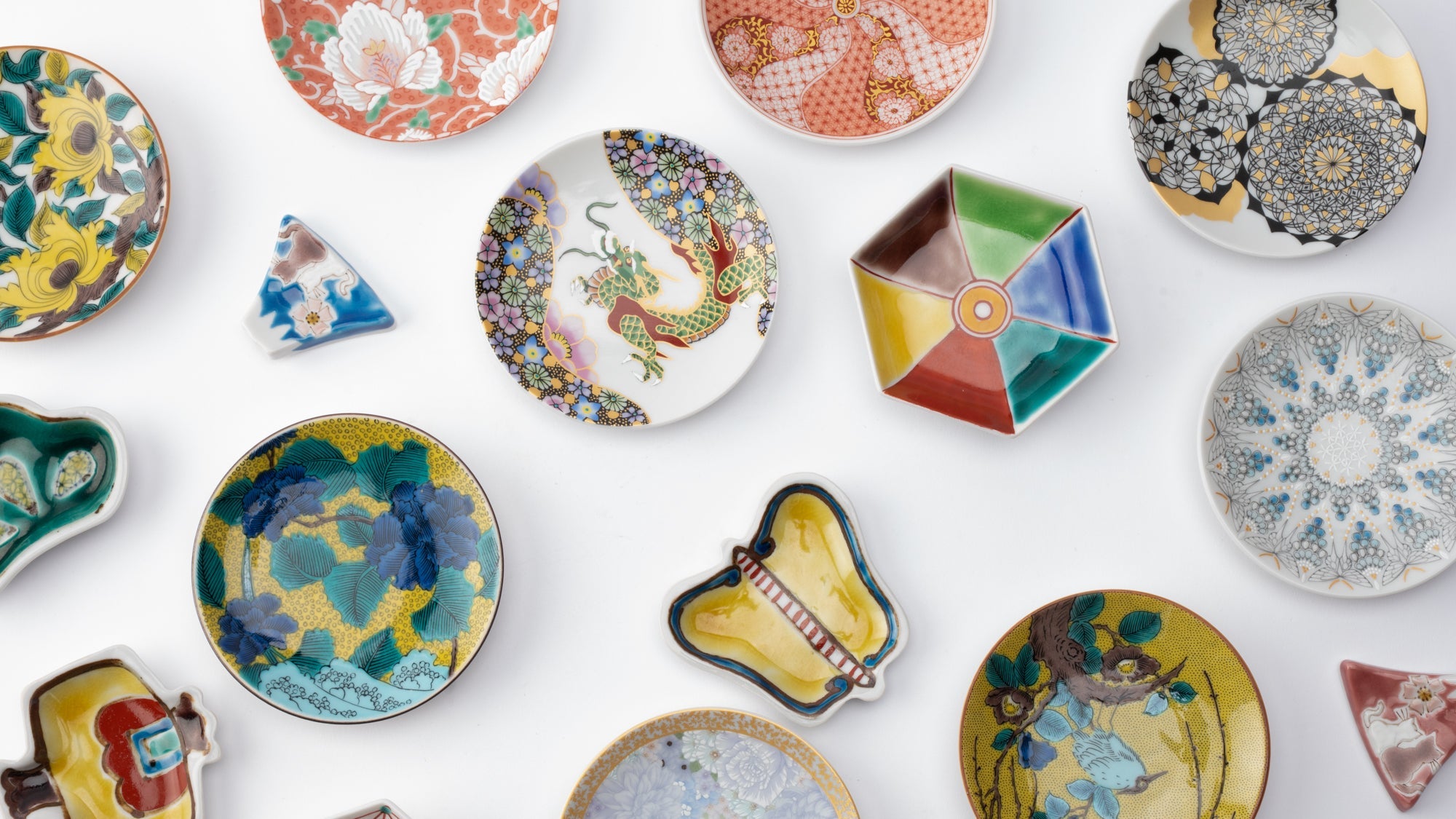
Choose options













Estimated Shipping Widget will be displayed here!
Yunomi Japanese Teacups
Yunomi are a kind of vertical, cylindrical teacup. They are typically used for casual tea times. Because of the large capacity of a yunomi, the area where the tea touches the air is small, so the tea does not get cold easily. They are also suitable for when you want to drink a lot of bancha or hojicha. In sushi restaurants, tea is traditionally served in a yunomi.
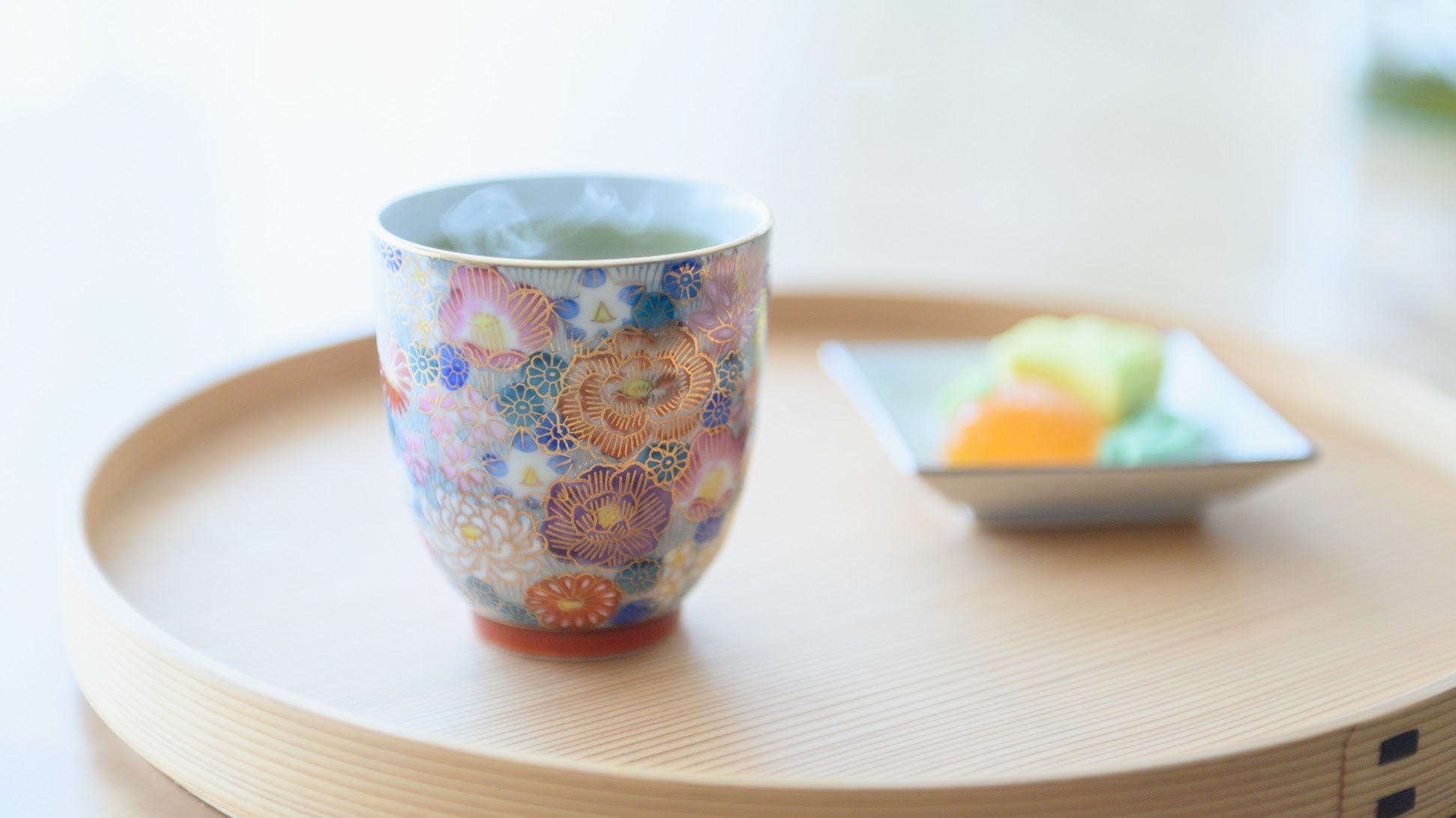
Hanazume
Hanazume is a classic Kutani ware technique in which flowers are intricately drawn across an entire surface. After the first firing, detailed floral designs are outlined with gold paint before the final firing. This decorative method, introduced by Shiro Mizuta in Kanazawa City during the Taisho period (1912 CE–1926 CE), beautifully combines vibrant flowers with elegant gold to create stunning pieces.
